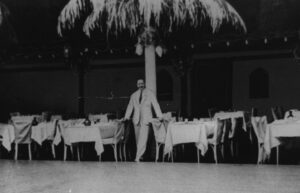
A Case for Opening Statements in Mediation
The Giant Panda. The Blue Whale. The American Bald Eagle. The Initial Joint Session in Mediation. Yes. These are all endangered or threatened species. As a mediator, I sometimes feel as though I have a better chance of a Snow Leopard sighting than witnessing more initial mediation opening statements. How did this core mediation element get on the path toward extinction? More importantly, does it matter?
Prior to any mediation, I confer with the parties’ lawyers regarding the “need” and merits of an initial joint session with presentations. Most frequently, each party opines that an initial joint session would be of little value. I routinely hear the following:
* The parties know the positions, so let’s get right to the bargaining;
* Not our first rodeo and we know the process;
* We do not need to listen to each other’s summary judgment arguments; and
* The parties are already far apart and a joint session may create more distance between them.
This list can go on. As mediation has become a staple element in the litigation process over the past few decades, many litigators now feel fairly comfortable in the mediation process. To so many of these practitioners, the opening statement is viewed as a waste of time or with downside risk of further entrenching parties in their positions.
As a mediator, I should celebrate this initial agreement among counsel. Complete agreement on a process issue can build momentum for other agreements along the journey, right? Yet, I cannot help but think that these lawyers seek to avoid the initial joint session more out of habit and routine than after careful consideration in each case.
As explained below, numerous potential benefits remain with an initial joint session. Please note, I appreciate that, at times, initial joint sessions could and should be avoided. For instance, where the parties have already conducted settlement conferences or prior mediations, there may be greater utility in proceeding directly to the caucus stage. Emotional issues, threats or other safety concerns may mandate that the parties remain separated.
For other cases, an initial joint session could be a useful tool in advancing the parties toward resolution. Consider the following factors in any analysis of the need for opening statements at an initial joint session. Please appreciate that this list is not intended to be comprehensive. The particular facts, circumstances and dynamics of each individual case should be evaluated.
An opening statement at an initial joint mediation session:
1. Sets the Tone. Parties will advance opposing positions and will fight to “win” in court. This adverse relationship can be recast into a positive tone to cooperatively seek resolution during mediation. Parties can remind each other that shields and swords can be left by the door during mediation. If settlement is not achieved, the litigation weapons can again be picked up.
2. Humanizes the Process. Introductions and initial discussions place together faces and names. I am no psychologist, but I can tell that there is a difference when parties initially engage each other directly. There appears to be greater respect for both participants and positions where these brief relationships are established. It is easier to dismiss points and positions from the faceless “them” and “the other side” of opponents who are strangers. Once the relationships are established, parties generally more carefully consider positions advanced.
3. Allows Direct Messaging. The litigation process unavoidably results in lawyering of messages and filtering of information for clients. There are virtually no opportunities to directly engage an adversary except settlement efforts. The initial joint session provides the forum for such direct messages. Messaging, quite often, includes clues or direct statements of what is needed by one party for resolution. If parties miss the message, the well-trained mediator will ensure that the message gets received.
4. Permits Evaluation of Opposing Counsel and Parties. Opening statements can function as a mini preview of the trial. When I spent years as a party representative in mediations, I possessed a general game plan. I knew where the bidding would commence and track on my side of the equation. I remained disciplined to stick with that plan while keeping an open mind. The one factor which most altered that analysis was the opening statement session. In that brief time, I would evaluate opposing counsel in action. I could see how the adversary responded and acted in these circumstances. Would these individuals play well before a court? Would they be likable before a jury? Can they convincingly tell their story? The risk calculus for each case necessarily changed based on these observations.
5. Allows a Voice to Be Heard. A number of litigants initiate a case in order to be heard. Some mediation participants, recognizing that the mediation amounts to their “day in court”, need to tell their story in order to proceed to resolution.
The initial joint session in mediation will not settle the case. It can set the stage and tone for the entire mediation process. It does allow unfiltered insight into an adversary’s thinking. It does provide the opportunity to send clear signals. It further provides the mediator with additional tools to use during the mediation caucus sessions. In sum, the initial joint session in mediation represents a small investment of time which could reap substantial dividends in reaching resolution. Carefully evaluate the merits and potential benefits before you skip the next initial joint session in mediation.




